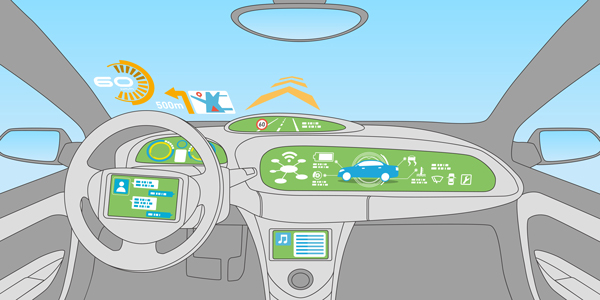GPS Tracking Keeps Internet of Things Moving for Vehicle Management
The growth of the Internet of Things has been a rapid one, to say the least Fast Company describes the wild west of this new frontier as something akin to the wide-eyed optimism and endless possibilities offered by the first push in the Internet’s popularity during the 1990s. The playing field is wide open and one area seeing a lot of attention is the integration of the IoT into transportation.
What started with a really neat way to control your thermostat and your house lights from your phone quickly expanded to your coffee maker and your alarm clock—and now it’s coming for the cars. In fact, TechZulu noted in another article that it’s estimated that 89 percent of new cars sold worldwide will come with embedded connectivity by 2024. But don’t worry; this development is definitely a cause for celebration rather than alarm, particularly in regards to the commercial sector.
The automotive industry is one vertical that Forbes predicts to see some big changes as a result of the new Internet of Things. The ability to analyze real-time data on the fly allows for a much deeper and pro-active role in regards to auto upkeep (and by association, the management of a fleet of vehicles). Manufacturers, managers and someday customers will be able to identify which factors affect which parts of their vehicle. This will allow them to maximize the safety and performance of any vehicle without the time-consuming and often expensive guessing games of the past.
GPS fleet tracking applications assist business owners by providing a host of useful information right at their fingertips to help maximize their fleet’s efficiency while reducing costs and increasing the quality of service. With everything available in real-time from the web, managers can make more informed routing and dispatching decisions for their drivers ultimately ensuring faster service times and happier customers for a real win-win. Networkfleet is one these fleet tracking systems changing the game for fleet management professionals. “Drivers really like the system because it helps them to spend less time getting to jobs and more time actually doing jobs!” Monte Yoder, chief financial officer of Hoffman Roto Rooter said of the management system. It allows for better routing, monitoring, fuel management and more, which helps you save money. “It helps us bring in more jobs and decreases our labor costs,” Yoder added.
With the tech expected to be present in nearly 90 percent of vehicles in the next nine years, it’s no surprise that businesses are lining up to be the first on board with this new technology. And it won’t only be businesses taking advantage of this wealth of information, but the average commuter too. Soon you’ll be able to know exactly how your car is running and how to get the most out of every mile. No more shelling out awful sums of cash for estimates to even determine your car’s problem; just look at the diagnostic sent to your tablet and then take it in for those specific repairs. Fleet managers are already saving money through the Internet of Things and it’s only a matter of time before you can get in on it yourself. | Images via Shutterstock









